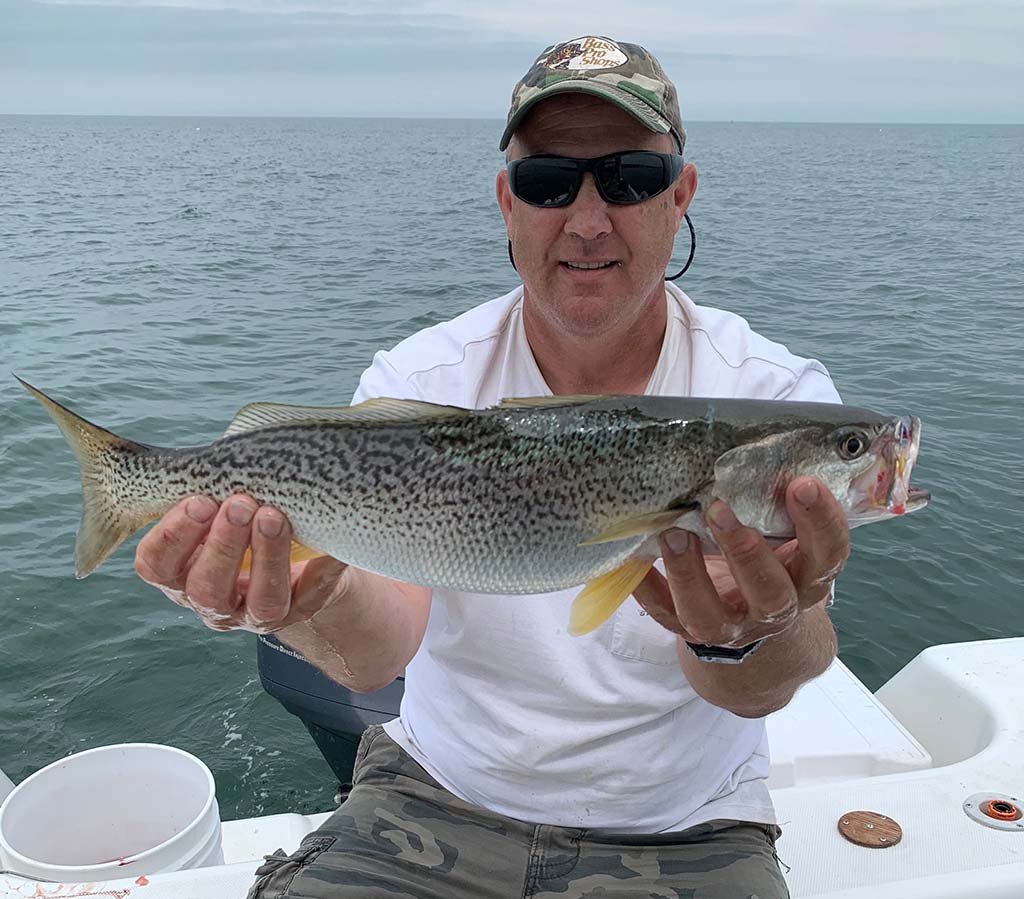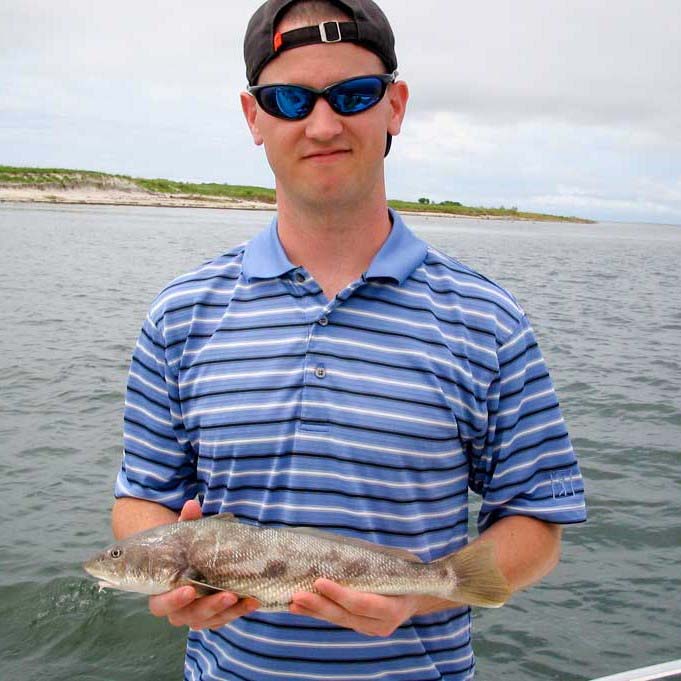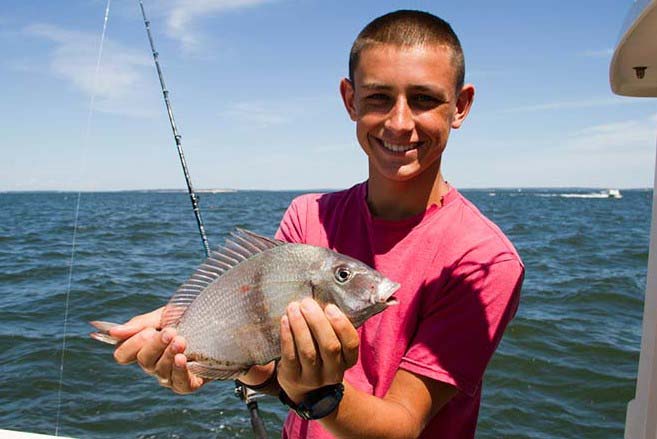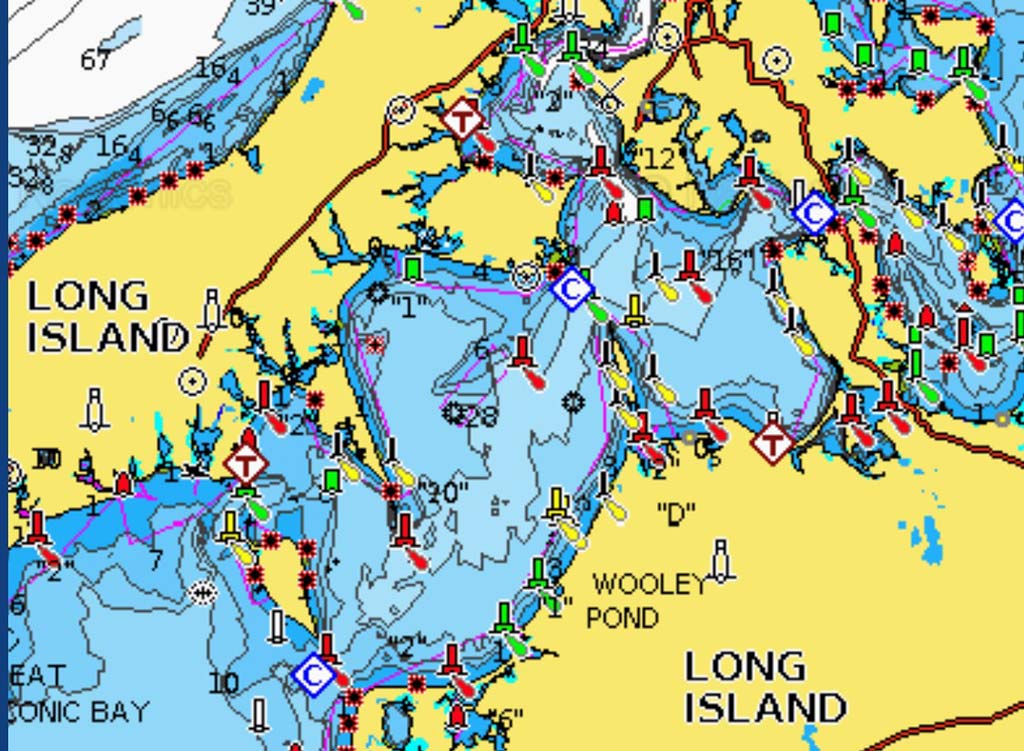
See what these East End waters have waiting for you during the dog days of August.
As certain as the sun will rise tomorrow morning, you can be certain that the Peconic Bay Estuary will become revitalized during August with an assortment of sea treats that offers anglers young and old fast-paced action, plenty of cheers and smiles along with some tasty panfish for supper. Let’s be honest, if you enjoy sinker bouncing, then it doesn’t matter whether you’re 9 or 90, there’s always excitement when it comes to mixed bag bottom fishing, particularly inside the Peconic Bays. Therefore let’s grab the proper bait and tackle and take a cruise through the Peconic’s, stopping off at some of the hot spots of August, and see what this giant aquarium has waiting for you.
Medley Of Options
From the west side of Robins Island to the east side of Jessup Neck and Noyack Bay, swift currents, rock piles, and hard crusty bottom play host to a myriad of baitfish and crustaceans that keep all visiting species of summer and early fall well fed. These species include weakfish, kingfish, porgies, blowfish and several species of southern visitors that may find their way to the hook.
The large spawning porgies and weakfish of spring are replaced with their smaller siblings that usually situate themselves in the same areas as their older family members. As the waters continue to warm, species such as northern puffers and northern whiting better known as blowfish and kingfish will share residences with the weakies and scup. Triggerfish, pilotfish and cocktail blues, although not as abundant, are also possibilities while targeting the bottom dwellers. Indeed anglers could have hours of fun on any given day catching these saltwater panfish. Best of all for those of us with kiddies or grandkids will find most young ones attentive and fascinated by the beautiful coloration of most of these summer species—okay, I’ll admit that blowfish and sea robins may not win any beauty contest, but to a child, they won’t care.

Take The Tour
During the month of August, the southern tip of Robins Island (South Race), close to the bell buoy 25 and the nun buoy at 26 are chock full of medium scup and spurts of weakfish in the 12- to 24-inch range. Since the South Race can be daunted with boat traffic, especially during the weekends, drifting rather than anchoring by coming on or off the drop-off south of the island where it will drop or rise (depending on how you drift) from approximately 18- to 30-feet of water holds most of the fish. The current can really rip through here so fish this area as the current eases and especially on a tide change.
While you’re here you may want to make a stop at Kingfish Hole which is a narrow deep-water drain surrounded by relatively shallow water that is tucked away along the northwest side of Robins Island, which runs vertical of buoy 4 starting about 1/4 mile north of the buoy along the North Race and extending south about a half mile where it meets the deep water located dead smack in the middle of Great Peconic Bay. Kingfish and blowfish are usually thick in this piece of bottom with some weakfish.
Moving a bit east, Nassau Point is an excellent area during August producing primarily weakfish and plenty of them. Depths fluctuate considerably off Nassau Point as the average water depth surrounding the point is between 25 and 35 feet. However, approximately 3/4 of a mile east/northeast of red buoy 22 lies a deep pocket of water between 60 and 70 feet that produces the best fishing for the sea trout on any moving tide. Generally, however, the start of the outgoing definitely has the edge. Drifting this area should certainly keep the rods bending and easily fill a full boat limit.
Just opposite of Nassau Point, Rose Grove gives way to good scup and weakfish action which is made up of flat sandy/mud bottom in 25 feet of water. Drifting is best here however anchoring and chumming here is effective on windy days when the drift becomes too fast.
Just east of Rose is the infamous Jessup Neck which is a peninsula on the eastern end of Little Peconic Bay, that wraps around into Noyack Bay. Here the area by buoy 17 in front of Jessup Neck and to the east at buoy 16 in front of Noyack Bay has been red hot this past spring for weakfish and scup. According to Steve at WeGo Bait and Tackle in Southold, “The bottom fishing in this area has been red hot with all the usual species since late June and is only getter better as the season moves along”.
If drifting is the choice method by buoy 16, work the incoming tide by starting out at the buoy in 12 feet of water and drift south to 54-feet of water for the formula to bottom dweller success. However anchoring and chumming has stood tried and true for as long as I can recall, which is often one stop shopping providing the chum is flowing. Anchoring in shallow water and dropping back on the anchor line right to the 50-foot drop off is key.
The current is moderate here and 3-ounce sinkers and 1-ounce jigheads will keep you on the bottom, although depending on conditions, sinker size may vary either way slightly. If you find for some reason the buoy 16 area is not producing, wait until the current begins to ease and head over to buoy 17 at the tip of Jessup Neck and try fishing the 70-foot depths where a good mixed-bag action often occurs an hour before and after slack water periods. Be advised that sea robins can at times be an issue in this area should you land on a nest of them, let it be known some mighty big sea bass also patrol the depths here.
Our final stop is further east along the west side of Shelter Island, known as the Green Lawns, which has always been a popular fluke haunt throughout the spring, however plenty of porgies, weakfish, blowfish and kingfish reside here throughout the summer months. Regardless of where you may wet a line, don’t leave home with without a navigation chart, especially if you are trailering and visiting the area. GPS units are paramount, however nautical charts can be studied and potential spots can be pinpointed and put in the GPS for future reference.

Light For The Fight
Although some of the areas see deep-water and strong currents, employing light tackle will prove beneficial over stout rods, especially when dealing with weakfish. The rod should be light and can handle the strength of large and small quarry.
My favorite rod for the fun at hand is the Lamiglas TFX6015C for its combination of lightweight power, durability, sensitivity and structural integrity that has provide years, and hopefully decades of excitement. The X-Flock non slip handle, Fuji reel seats and Fuji Guides make this one serious stick. An Abu Garcia Ambassador C4 casting reel filled with 17-pound test Berkley NanoFil line completes the outfit.
As for the terminal end of the tackle, standard porgy rigs take care of scup, while hi/lo rigs with super sharp Gamakatsu 1/0 or 2/0 O’Shaughnessy hooks attached onto a 8-foot length of 15-pound fluorocarbon attached to dropper loops 6 and 18 inches above a surgeons knot that is designated for the sinker is ideal for weakfish and scup. Lastly the final rig would best suited for kingfish and blowfish would be any snelled flounder hook tied tandem style. Sproat or Mustad beak hooks in size 4 and 6 are also good alternatives. Tied tandem style will keep these hooks close to the bottom which is where the duo spends most of their time on.
Sinkers round out the rigs and will vary from 2 to 4 ounces depending on the strength of the current and the area. As for jigs, unless you are looking for some bluefish, I would keep them in the bag as they are not as effective as they are during the spring. Besides, trying to keep the light leadheads on the bottom is often a challenge in deep water and swift currents.

Spread The Slick
Several logs of frozen clam snot certainly can’t hurt your efforts. In fact, the chum can be applied both at anchor and while drifting from a chum pot dragged across the bottom. Several years ago John and Paul from J&J Bait and Tackle in Patchogue taught me a neat trick by drifting and dragging a chum pot with frozen clam logs. As Paul explained “the pot stirs the bottom causing worms, clams and shrimp to becoming exposed which leaves a natural chum trail in addition to the employed one”. As Paul pointed out, weakfish are attracted to the disturbance and will move in to investigate. John grew up fishing for weakfish in the Peconic’s and swears by this tactic. Just make sure there is at least 150-feet of cord attached to the chum pot which should be strong and intact to withstand the dragging.
Bait wise, clams, sandworms and squid are the standard choices. However let me add that squid strips are vital on the hi/lo rigs when weakfish are the main target, while small strips of clams, squid and pieces of worm are ideal for the other groundfish. Keep in mind that the days the winds are blowing brisk from the northwest, sandworms will be best on the porgies as sudden high-pressure systems often puts the scup off their bite for a day or two. In these conditions they can rarely resist a tasty sandworm still.
Lastly please note that NYS Regulations allow a one weakfish per angler at 16 inches or larger, while scup is limited to 9 inches or better with a 30 fish per man possession. The porgy bag limit increases to 50 fish per man per day starting September 1st through December 31st. As for blowfish and kingfish, there are no regulations at this time. Please retrain from taking more fish than you need, regardless how abundant they seem to be. There’s always the next trip.



